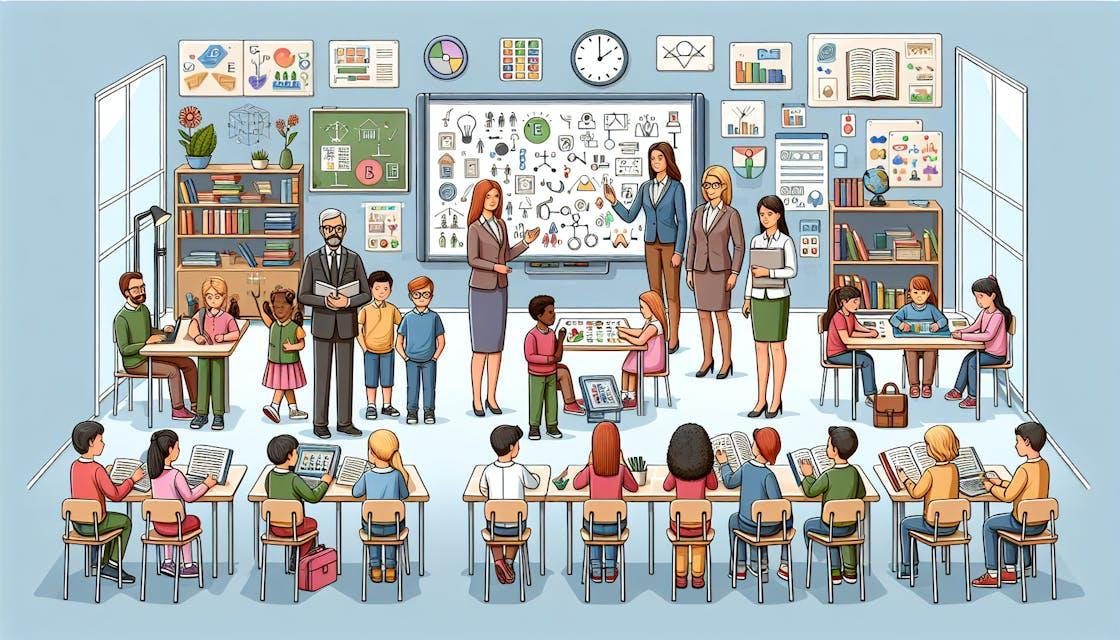Balancing Fun and Learning: Essential Strategies Every Educator Needs
In today’s fast-paced educational landscape, balancing fun and learning is more vital than ever. Engaging students while maintaining academic rigor can seem challenging,but with the right strategies,every educator can create a classroom environment where excitement and knowledge go hand in hand. This extensive guide explores the best ways to combine fun and effective education, ensuring your students thrive both academically and emotionally.
Why Balancing Fun and Learning matters
It’s a common misconception that fun distracts from learning. In reality, integrating playful elements can enhance student engagement, boost motivation, and improve retention of information. When educators find the sweet spot between enjoyment and instruction, they foster a positive atmosphere that nurtures curiosity, creativity, and lifelong learning.
- Enhanced Motivation: Students are more likely to participate actively when lessons are enjoyable.
- Improved Focus: Fun activities break up monotonous routines, reducing burnout and increasing attention span.
- Deeper Learning: Combining fun with core content leads to better understanding and recall.
- Positive Relationships: A vibrant classroom eases stress, allowing both students and educators to connect genuinely.
Key Strategies to Balance Fun and Learning
Creating a classroom that balances fun and learning requires thoughtful planning and a willingness to innovate. Here are actionable, essential strategies that every educator should try:
-
Incorporate Gamification
- Apply game design elements (points, badges, leaderboards) to lessons.
- Use educational games—quiz competitions, scavenger hunts, or virtual challenges.
-
Foster Project-Based Learning
- Engage students with real-world problems and hands-on projects.
- Encourage teamwork and creativity as students explore solutions.
-
Utilize Interactive Technology
- Incorporate apps, digital whiteboards, and virtual reality experiences.
- Allow students to create and share digital content.
-
Integrate Movement and Play
- Infuse lessons with activities that get students moving (role play, classroom stations, kinesthetic games).
- Organize brief “brain breaks” with music, dance, or mindfulness exercises.
-
Promote Student Choice and Voice
- Offer options for how students complete assignments or participate in class.
- Invite students to suggest or lead activities related to current learning goals.
Benefits of Balancing Fun and Learning
- Boosts Retention: Fun, memorable activities improve long-term retention of knowledge.
- encourages Risk-taking: A playful environment helps students feel comfortable making mistakes and trying new things.
- Improves Social Skills: collaborative games and group projects build communication and problem-solving abilities.
- Supports Diverse Learners: Different types of activities cater to varied learning styles and abilities.
- Increases Overall Satisfaction: Both students and teachers find more joy and fulfillment in the classroom.
practical Tips for Implementing Fun and Learning in the classroom
-
Start Small
- Experiment with short, interactive activities before embedding larger projects.
-
Link Fun Directly to Curriculum
- Ensure enjoyable activities reinforce, not replace, your core objectives.
-
Gather feedback
- Use quick surveys, reflection journals, or informal check-ins to see what students enjoy and what enhances their learning.
-
Celebrate Achievements
- Recognize participation and learning milestones, not just academic success.
-
Rotate Approaches
- Vary activities to keep novelty high and address multiple intelligences.
Case Study: Fun and Learning in Action
Ms.Clara’s 4th Grade Science Class: Ms. Clara introduced a “Mission to Mars” project, transforming her classroom into a mock NASA laboratory. Students took on different astronaut roles, solved STEM challenges, and recorded video diaries. The gamified unit resulted in higher test scores, above-average attendance, and glowing feedback from both parents and students.
- Key Takeaway: Purposeful, playful learning can dramatically improve both academic and social outcomes.
First-Hand Experience: Educator Insights
“When I started blending fun activities—like math bingo or science escape rooms—into my units, classroom energy skyrocketed. My students weren’t just learning more; they looked forward to coming to school. The best feedback? ‘I didn’t even realize we were learning, it was so much fun!’”
— Mr. Lee, Middle School Math Teacher
Addressing Potential Challenges
- Time management: Balance is key; plan fun and learning activities to fit your schedule.
- maintaining Discipline: Set clear expectations for behavior during creative activities.
- Resource Limitations: Use free online tools, local community resources, or adapt games to be low-tech.
Remember, the goal isn’t to make every moment a party, but to thoughtfully infuse fun into learning.
conclusion: Make Learning Memorable Through Fun
Every educator has the power to transform their classroom by balancing fun and learning. By thoughtfully weaving playfulness into lessons, teachers spark curiosity, increase motivation, and promote deeper understanding.The result is a dynamic, nurturing space where students thrive—a place where learning truly comes to life. Embrace these essential strategies, experiment boldly, and watch your students engage on a whole new level.

